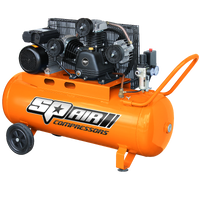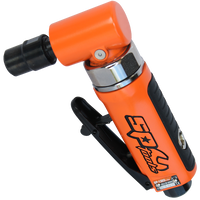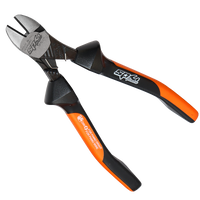Why Buy From Us?
- Australian Owned
- 100% Fitment Guarantee
- Genuine Quality Brands

Shop now. Pay Later. Interest Free.
Make 4 interest-free payments of $35.99 fortnightly and receive your order now. More info

Enjoy Now, Pay Later
Can't Find What You're Looking For?
If you're looking for something in particular, we can help. Drop us a line using the button below.
Submit A RequestWhy Buy From Us?
- Australian Owned
- 100% Fitment Guarantee
- Genuine Quality Brands
Description
30-2131-100 - 100 PSIg Brass Sensor Kit
- Accuracy: +/- 3% Full Scale over -40C to 105C includes Repeatability, Hysteresis and Linearity
- Operating Temp: -40C to 105C / -40F to 221F
- Burst Pressure: 200PSI
- Response Time: < 1ms
- Vibration:100 to 2000Hz, 20g Sinusoidal, 3 Axes
- Sensor Body: Brass
- Wetted Materials: 304L & 316L Stainless Steel
- Thread: 1/8" NPT Male Thread
- Weight: < 85 Grams
- Supply Current:
- Output: .5 to 4.5Vdc Linear
- Elec. Termination: Integral weatherproof connector, includes mating connector, pins & pin lock
- Includes: 100 PSIg Brass Sensor, Connector, Pins & Pin Lock
Brass Gauge style (PSIg) Pressure Sensors
AEM offers brass PSIg sensors in 15, 100 and 150. Gauge style pressure sensors reference pressure above atmospheric pressure. When exposed to atmospheric pressure, gauge style pressure sensors will read 0 psig. Gauge style pressure sensors are commonly used for oil pressure, fuel pressure, brake pressure, nitrous pressure etc.
Which Pressure Sensor is right for you?
There are many different tools that can be used for measurement, but the degree of accuracy is dependent upon the tool. For example, a ruler can measure distance with a good degree of accuracy, but for a more precise measurement a caliper should be used. The difference between a brass pressure sensor and a stainless steel pressure sensor is similar if we think about it in these terms:
Brass Pressure Sensor = Ruler
Use a Brass Pressure Sensor where you need a good reference to what pressure is being seen.
Example: Brass Pressure Sensor used for a Boost Gauge – Reference/Information for knowing manifold pressure, not for ECU calibration.
Stainless Pressure Sensor = Caliper
Use a SS Pressure Sensor where you need exact details of the pressure.
Example: MAP Sensor information for the ECU – Calibration/crucial information for the ECU.
Features
- Brass sensors accurate to within 3% of full scale (pressure sensors)
- High-quality sealed sensor housings are virtually impervious to automotive fluids (360-degree welded wetted area)
- Connector and pins included
Specifications
- Accuracy: +/- 3% Full Scale over -40C to 105C includes Repeatability, Hysteresis and Linearity
- Operating Temp: -20C to 105C / -4F to 221F
- Burst Pressure: 200PSI
- Response Time: < 1mS
- Wetted Materials: 304L & 316L Stainless Steel
- Vibration: 100 to 2000Hz, 20g Sinusoidal, 3 Axes
- Weight: <85g
- Supply Current: <6mA at 5 Vdc
- Output: .5 to 4.5Vdc Linear
- Transfer Function: PSI = (25*(Voltage))-12.5
- Elec. Termination: Integral weatherproof connector, includes mating connector & pins(Supply Voltage 5Vdc +/- .5, Ground, Output)
What's Included
- 1x 30-2131-15G 15 Psig
- 1x 30-2131-30 30 Psia (2 Bar)
- 1x 30-2131-50 50 Psia (3.5 Bar)
- 1x 30-2131-75 75 Psia (5 Bar)
- 1x 30-2131-100 100 Psig
- 1x 30-2131-150 150 Psig
Compatibility
- Universal Part
30-2131-100 - 100 PSIg Brass Sensor Kit
- Accuracy: +/- 3% Full Scale over -40C to 105C includes Repeatability, Hysteresis and Linearity
- Operating Temp: -40C to 105C / -40F to 221F
- Burst Pressure: 200PSI
- Response Time: < 1ms
- Vibration:100 to 2000Hz, 20g Sinusoidal, 3 Axes
- Sensor Body: Brass
- Wetted Materials: 304L & 316L Stainless Steel
- Thread: 1/8" NPT Male Thread
- Weight: < 85 Grams
- Supply Current:
- Output: .5 to 4.5Vdc Linear
- Elec. Termination: Integral weatherproof connector, includes mating connector, pins & pin lock
- Includes: 100 PSIg Brass Sensor, Connector, Pins & Pin Lock
Brass Gauge style (PSIg) Pressure Sensors
AEM offers brass PSIg sensors in 15, 100 and 150. Gauge style pressure sensors reference pressure above atmospheric pressure. When exposed to atmospheric pressure, gauge style pressure sensors will read 0 psig. Gauge style pressure sensors are commonly used for oil pressure, fuel pressure, brake pressure, nitrous pressure etc.
Which Pressure Sensor is right for you?
There are many different tools that can be used for measurement, but the degree of accuracy is dependent upon the tool. For example, a ruler can measure distance with a good degree of accuracy, but for a more precise measurement a caliper should be used. The difference between a brass pressure sensor and a stainless steel pressure sensor is similar if we think about it in these terms:
Brass Pressure Sensor = Ruler
Use a Brass Pressure Sensor where you need a good reference to what pressure is being seen.
Example: Brass Pressure Sensor used for a Boost Gauge – Reference/Information for knowing manifold pressure, not for ECU calibration.
Stainless Pressure Sensor = Caliper
Use a SS Pressure Sensor where you need exact details of the pressure.
Example: MAP Sensor information for the ECU – Calibration/crucial information for the ECU.
Features
- Brass sensors accurate to within 3% of full scale (pressure sensors)
- High-quality sealed sensor housings are virtually impervious to automotive fluids (360-degree welded wetted area)
- Connector and pins included
- Accuracy: +/- 3% Full Scale over -40C to 105C includes Repeatability, Hysteresis and Linearity
- Operating Temp: -20C to 105C / -4F to 221F
- Burst Pressure: 200PSI
- Response Time: < 1mS
- Wetted Materials: 304L & 316L Stainless Steel
- Vibration: 100 to 2000Hz, 20g Sinusoidal, 3 Axes
- Weight: <85g
- Supply Current: <6mA at 5 Vdc
- Output: .5 to 4.5Vdc Linear
- Transfer Function: PSI = (25*(Voltage))-12.5
- Elec. Termination: Integral weatherproof connector, includes mating connector & pins(Supply Voltage 5Vdc +/- .5, Ground, Output)
- 1x 30-2131-15G 15 Psig
- 1x 30-2131-30 30 Psia (2 Bar)
- 1x 30-2131-50 50 Psia (3.5 Bar)
- 1x 30-2131-75 75 Psia (5 Bar)
- 1x 30-2131-100 100 Psig
- 1x 30-2131-150 150 Psig
- Universal Part
Best Sellers

Boost Reference Adapter - BRA (BT-50 11+/Ranger 11+) - Black
$69.96
$76.95





















































































































